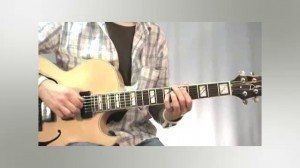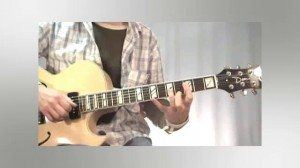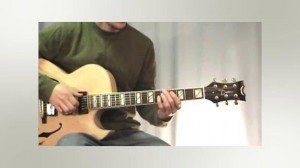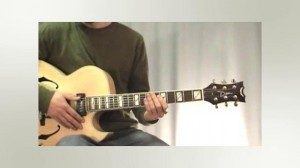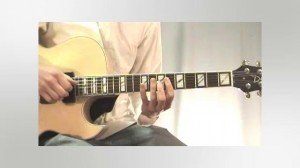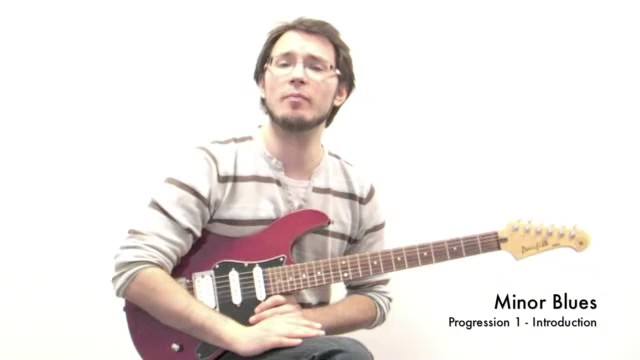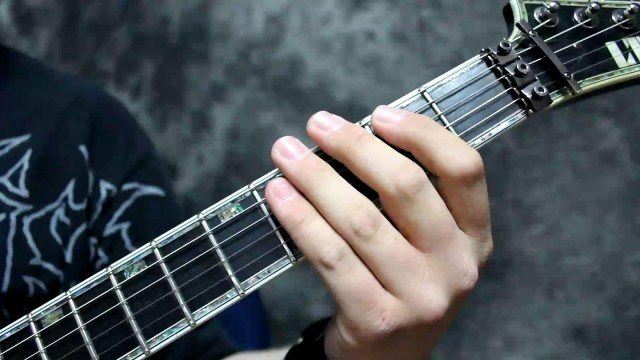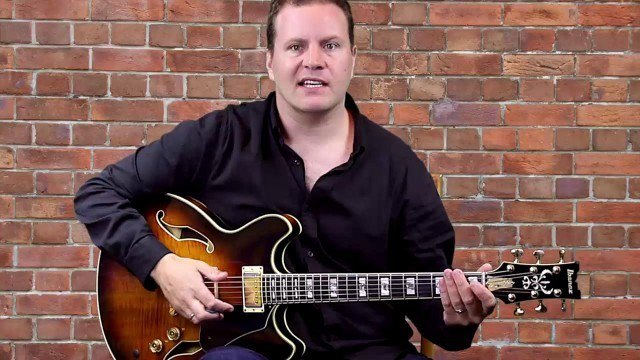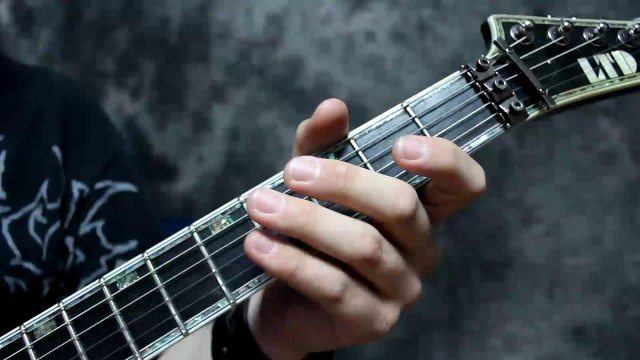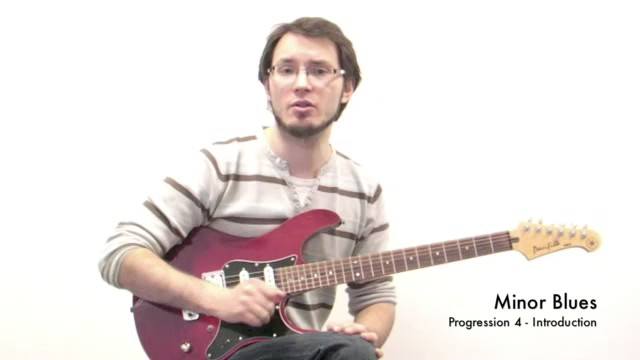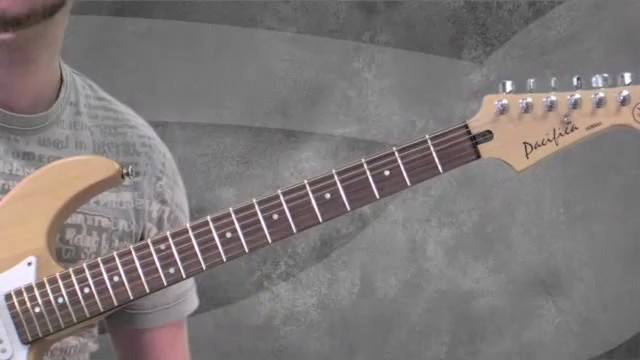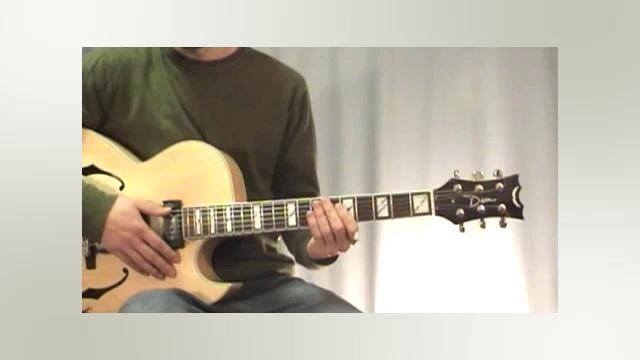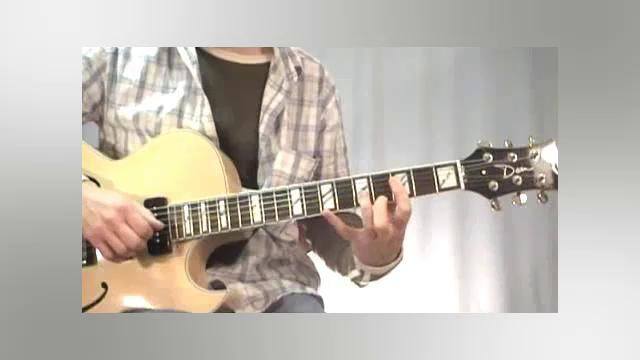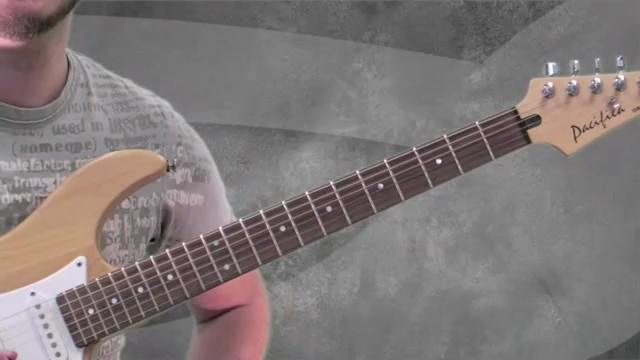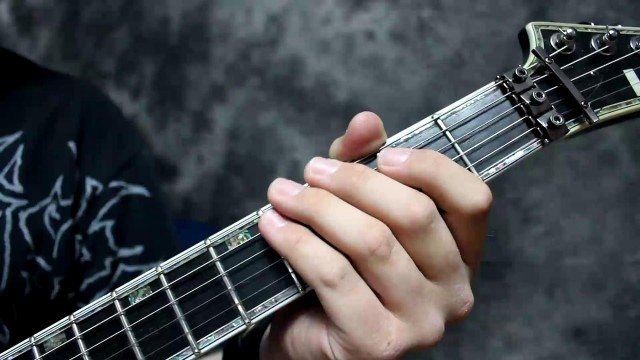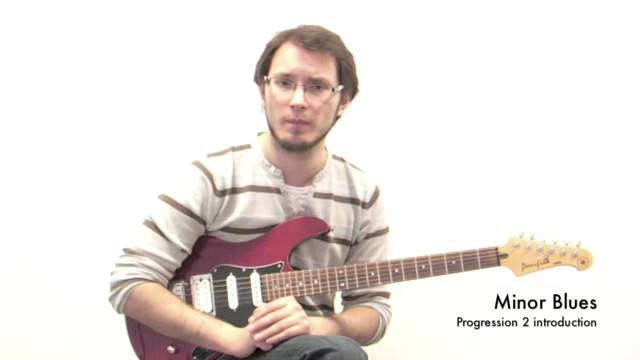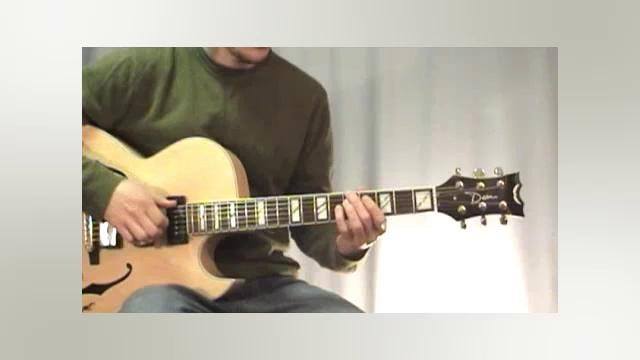Chord Inversions - What are they ??
An inversion is a name for a chord who's notes have been re-arranged.
Lets start by looking at the Bb7 Chord.
For each inversion I will give you a notated example of each chord as you might see it notated for a piano. This will make the inversion process more clear since pianos allow us to view notes in a more horizontal manner, unlike the guitar. I will then apply each inversion into a common voicing on the guitar.
Example 1.
Bb D F Ab
Now. If we wanted to invert this chord we would start by moving the Root note 'Bb' somewhere other than the Root position. In other words, it will no longer be the bass note (lowest note) of our chord.
Example 2. The First Inversion
D F Ab Bb
Here you see the 'Bb' bass note has been moved to the end of the chord and is now the highest note. Our Root note is now D. Since D is the 3rd of a Bb7 chord, we call this the 1st inversion.
Example 3. The Second Inversion
F Ab Bb D
This process can be applied again. We can see that the D note has now been pushed to the end of chord and the F is now the lowest note, the bass note. We call this the Second Inversion.
Example 4. The Third Inversion
Ab Bb D F
Lastly the Third Inversion. Following the same process we moved the F note to the end of the line and used Ab, our chords 7th degree, and made it the lowest note. This is called the Third Inversion.
Any kind of chord can be inverted. Major, Minor, Dominant, Half Diminished ( aka min 7 b5 ) or even Diminished. However the Diminished chord is symmetrical and inverting this chord doesn't have quite the same impact. It is however an important topic and I will be discussing it in separate lessons.
Take a moment to practice each of these inversions. Make sure you can recognize each of them by shape. It helps that they each have a unique shape so think about that and even have a go at applying them to different dominant chords...maybe a C7 or a G7. Then join me in the next lesson and we will continue the discussion.
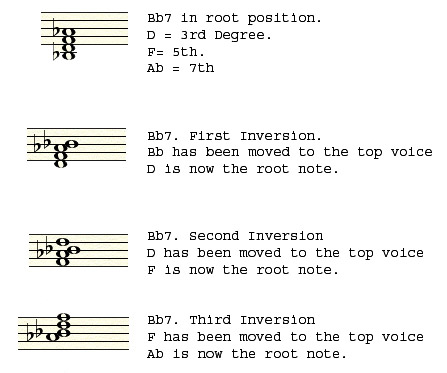 |

